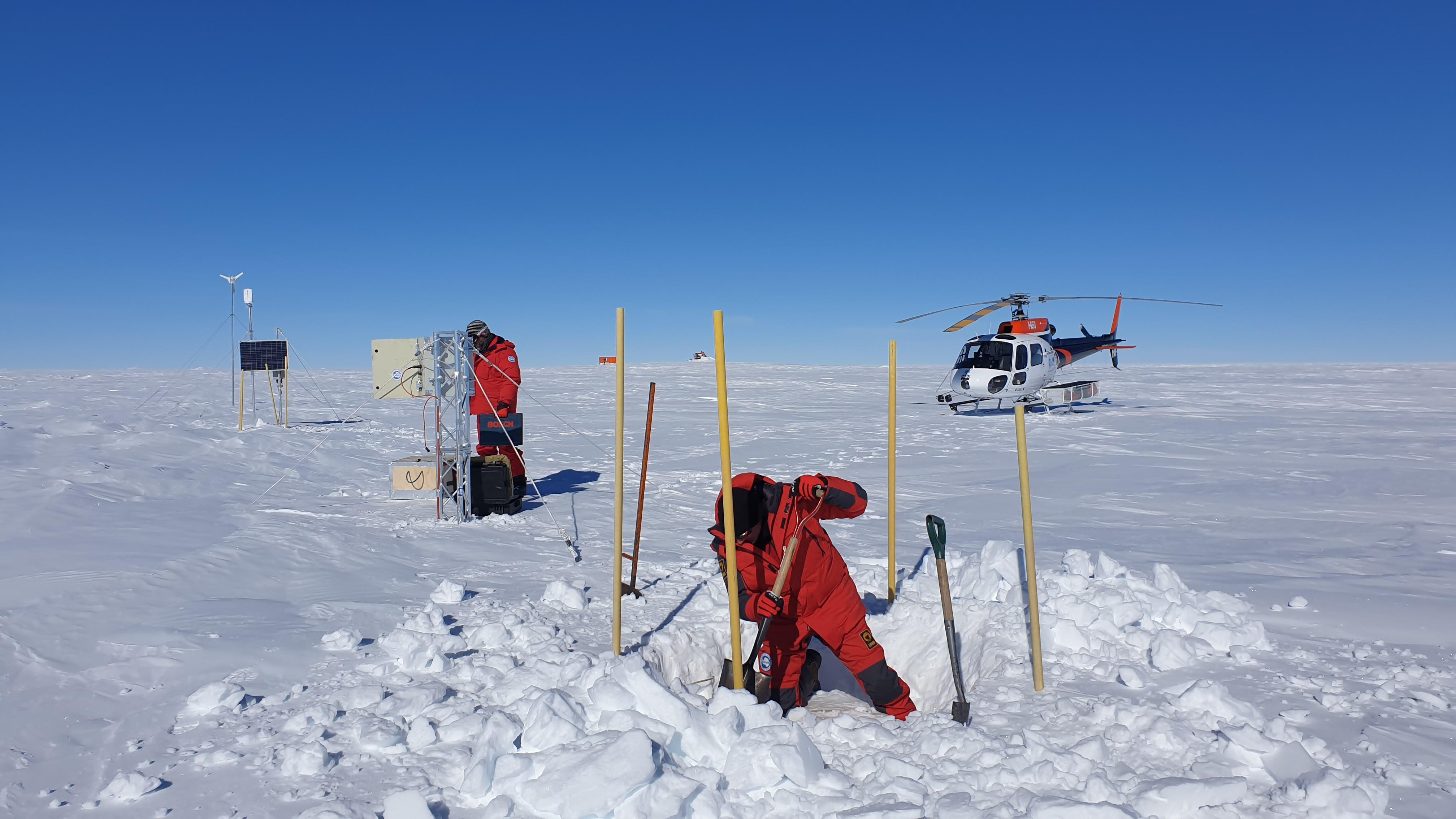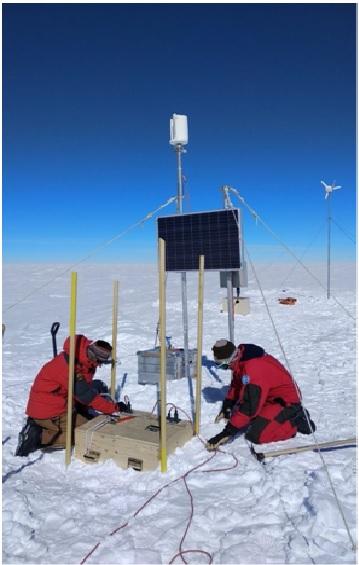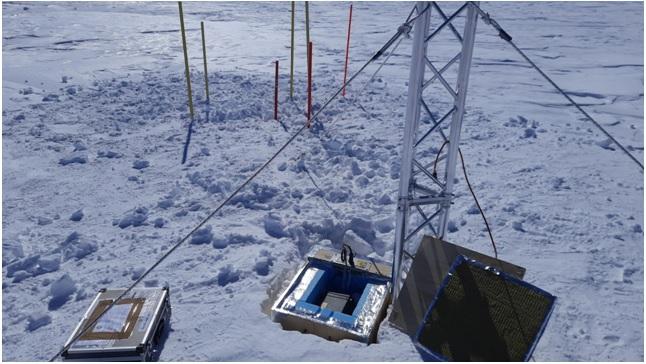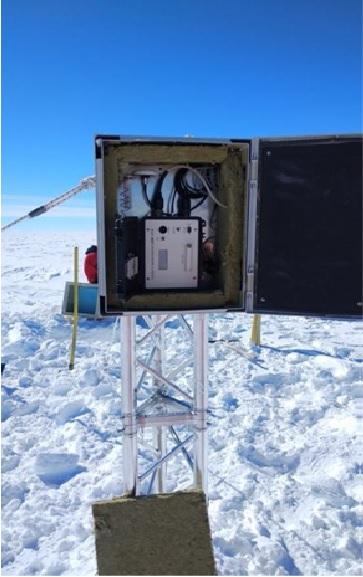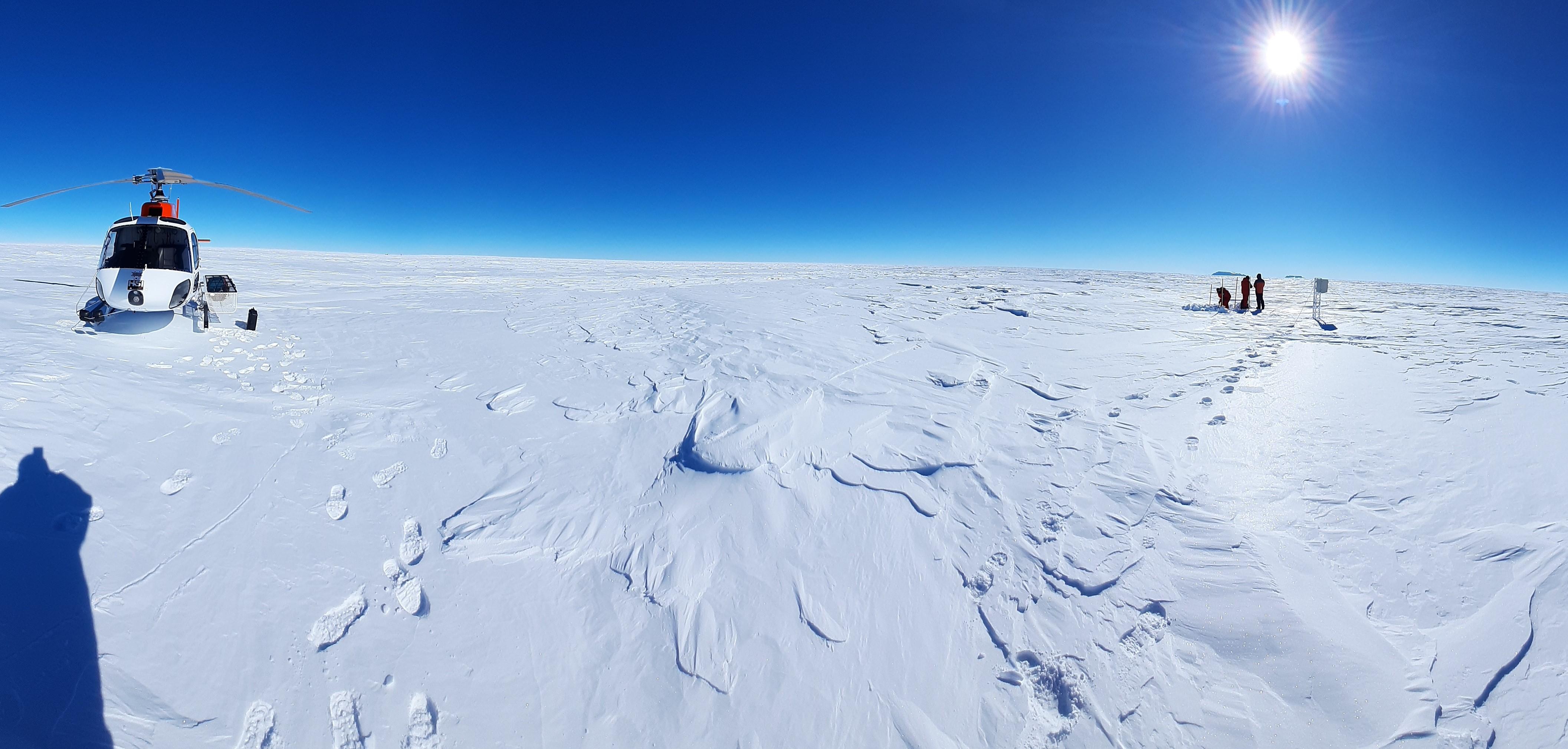- Acronym
- PNRA16_00204
- Code
- PNRA16_00204
- Anno
- 2016
- Research area
- Earth science
- Specific research topic
- Earth's magnetic field monitoring in Antarctica outside permanent observatories
- Region of interest
- Talos Dome, plateau antartico
- PI
- Lucia Santarelli
- PI establishment
- Istituto Nazionale di Geofisica e Vulcanologia
- Institutional website
- http://www.ingv.it
- Other institutions and subjects involved
- Consistency of the research team
- Project status
- Completed
- Main stations used
- Attività svolta in Italia MZS
- The project
Polar regions are very important for studies of the upper atmosphere and magnetosphere in the context of Sun-Earth relations and space weather, because in those areas solar wind particles can penetrate the Earth's atmosphere and reach lower altitudes. Observations of geomagnetic field variations in the polar regions are therefore an important research tool for the study of magnetospheric dynamics. The distribution of geomagnetic observatories on a planetary scale strongly favors the northern hemisphere due to the predominant presence of industrialized countries. Increasing geomagnetic field measurement points in the Southern Hemisphere is therefore very important in order to try to redress this imbalance.
The project involved the construction of a self-sufficient station to monitor changes in the geomagnetic field, and its subsequent installation in December 2020 in Antarctica at Talos Dome, outside the permanent observatories about 300 km from the MZS observatory, capable of withstanding the extreme temperatures that are reached in winter on the Antarctic plateau (as low as -60°C).
A complete and self-sufficient system for measuring changes in the vector components of the field, with low power consumption (0.5 W), powered by accumulators recharged by wind generators and during the summer also by solar panels, was developed at the technological infrastructure of the INGV laboratories; it was designed to operate autonomously during the austral winter, with only one annual intervention for maintenance and data download with a sampling rate of 1Hz. The station operated for 2021 withstanding the austral winter: we achieved the goal of obtaining a long data set by keeping the station running even during the austral winter when the temperature can reach -60°C: we recorded nearly 11 months of data at 1 Hz in one year. The station went from temporary to permanent.
Talos Dome, together with MZS and New Zealand Observatory Scott Base (SBA), forms a network along the geomagnetic parallel of 80°S, which is interesting for the study of longitudinal propagation of geomagnetic signals. Data from the new station, together with data from the permanent observatories, contribute to improved analysis of magnetospheric dynamics and ionosphere-magnetosphere coupling.
- Images
-
- Motivation, importance of research
- Objectives of the proposal
- Activities carried out and results achieved
- Products
